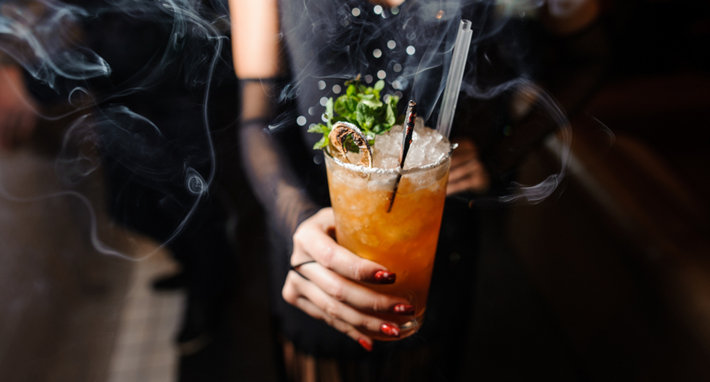The True Cost of that Drink in Your Hand

Let’s imagine that you’re out on the town with friends on a Saturday night. You walk into a bar that’s wall-to-wall with bodies. Young and not-so-young men and women talk, laugh and dance to the music, each with a drink in their hand. It’s one of the most popular night spots in town so there’s 800 people enjoying themselves. You might not realize that the cost of this night out far surpasses the dollar value of the drinks sold. A good portion of these costs are going to wind up on your tax bill, even if you’re a non-drinker yourself.
How could this possibly be? It’s because some of these 800 people are going to drink excessively and that creates problems and costs for every citizen. On this night, for example, there might be incidents like these:
- Four young men pile into a car to get back to their university housing. On the way, the impaired driver causes a wreck. There’s law enforcement and emergency medical costs to get everyone cared for, hospitalizations for some people, lost time at work for the occupants in the other car, insurance claims for the vehicles and so on.
- One man decides that he’s too drunk to drive home and his apartment is only a mile from the bar. So he takes off on foot for home. On the way, for reasons we will never know, he falls into the river that flows through the middle of town and drowns. His family is going to struggle with this loss and need public assistance for a few years.
- A few of the couples at the bar are in the middle of relationship problems and are looking to forget their problems with some alcohol. When they get home, however, the problems flare up and there’s a shouting match or maybe even domestic abuse. The neighbors call the police. There’s more costs for the police, incarceration of the guiltiest persons, appearances in court and jail stays.
- As always, some of these people are chronic excessive drinkers. You could call them alcoholics. Costs related to their problems and their lives could run high and involve domestic or child abuse, illness, foster care for their children, ruined businesses, lost careers, personal injury, hospital stays and so on.
So What Are these Hidden Costs Going to Run Tonight?

As you can see, some of these costs are going to be borne by the individuals involved and some will be covered by federal, state or local taxes. Studies into the distribution of these costs find that about 40% of these costs are going to be covered by your taxes. So let’s look at how high this tax bill is going to run tonight.
If this bar fills up by 8 p.m. and stays busy until closing time at 2 a.m., and each patron drinks 2.5 drinks per hour (a typical estimate by some bartenders), there will be 12,000 drinks sold on this night.
A study published in the American Journal of Preventative Medicine estimated that the hidden cost of every drink sold this night works out to $2.05 due to the expenses caused by excessive drinking. So the total bill resulting from excessive drinking will be $24,600 by the end of the night. The portion that will be covered by taxes will be about $9,840 just from this one establishment.

Now multiply this by every bar in the country. This study estimated the total national cost of excessive drinking at $249 billion dollars. The Centers for Disease Control and Prevention (CDC) calculated that this comes to an average of $807 per person. Remember that the next time you pay federal, state or local taxes.
The focus of news media is largely on the opioid epidemic and understandably so. But while 42,000 people died from opioids in 2016, excessive alcohol consumption kills an estimated 88,000 Americans per year.
Those who chronically drink excessively do so because they can’t control their drinking. When they see damage occurring to their health, relationships, finances or jobs, they don’t have the ability to discipline themselves. These are the ones most likely to suffer financial loss and cause financial loss for others. These are the ones who need help the most. And these are the ones that Narconon has been helping for more than fifty years.


 ®
®